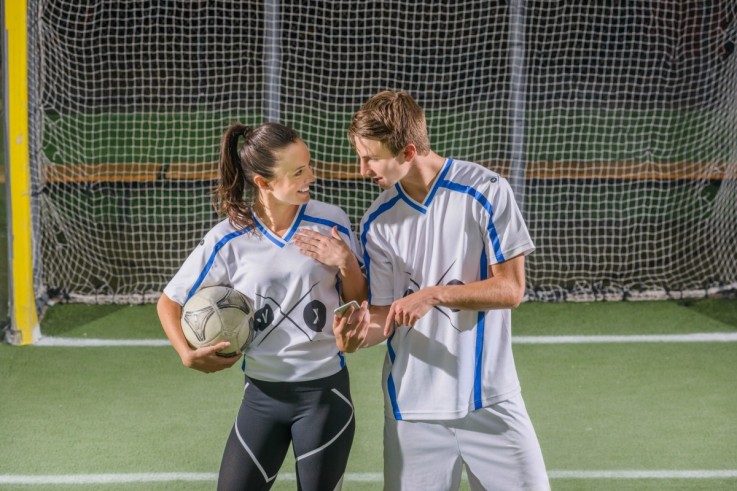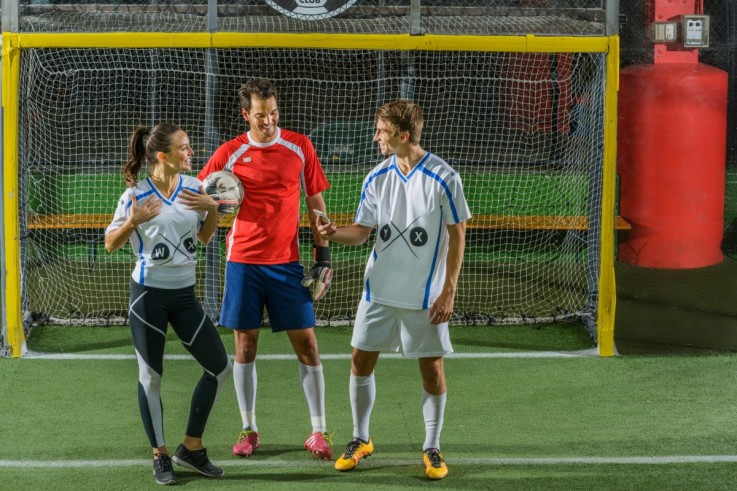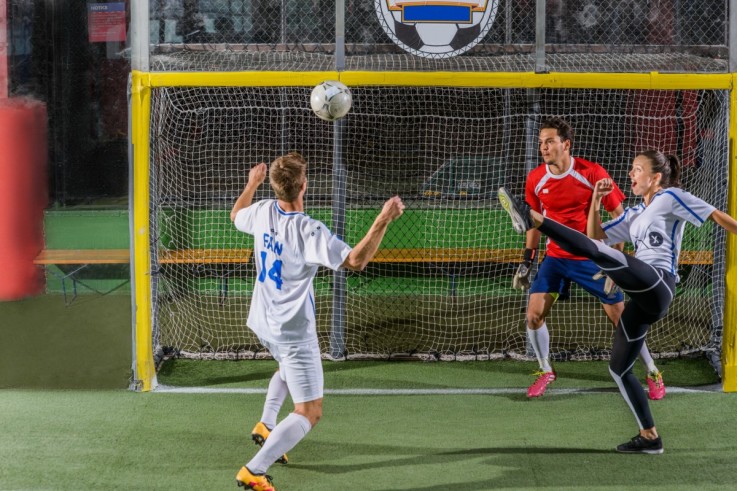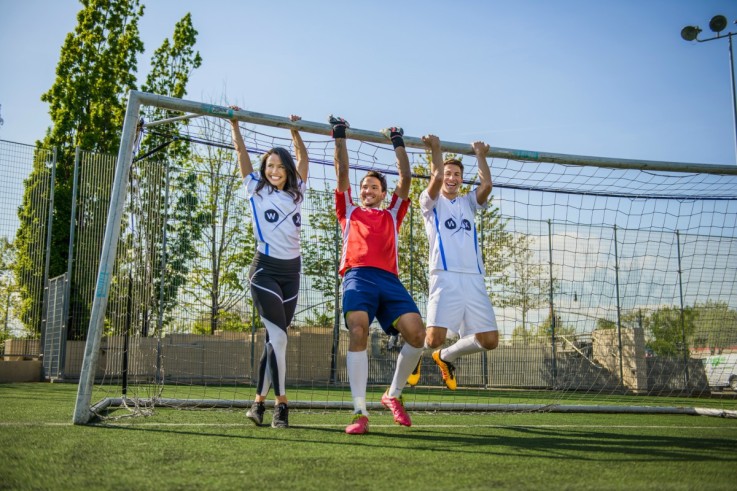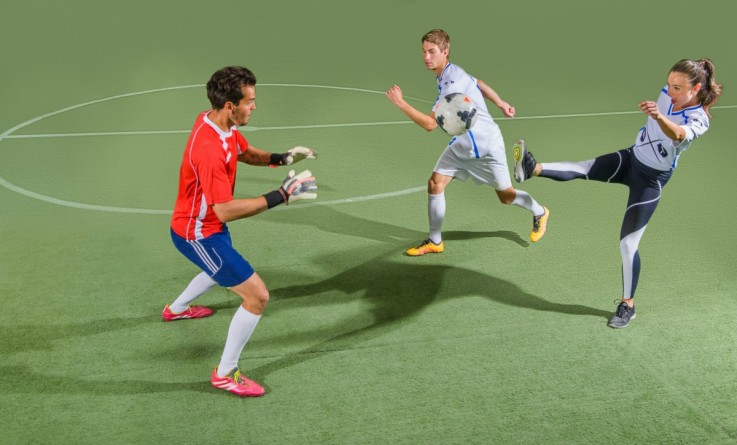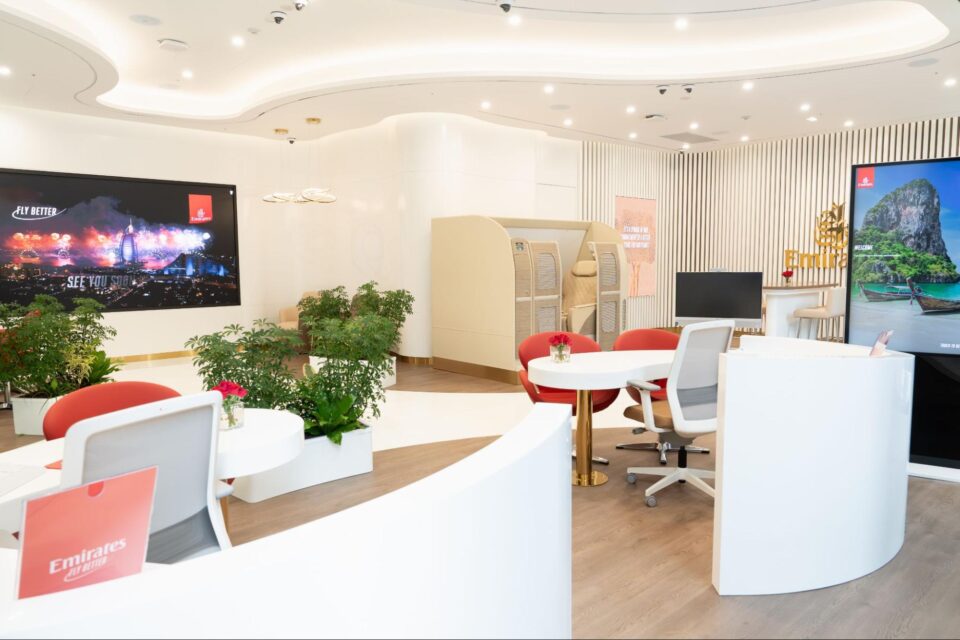Wearable Experiments’ Billie Whitehouse on the fashion of the future.

She’s been described as the “female Elon Musk” and she’s shaking up wearables as we know them. We took the chance to talk to innovative designer and entrepreneur Billie Whitehouse, Founder of Wearable Experiments (WE:EX) about wearable technology, empowering the customer through their data, and upgrading your clothes.
Could you describe what Wearable Experiments (WE:EX) does in a nutshell?
We design, build and manufacture apparel that has electronics in it. We’re trying to empower your skin as an interface, meaning that instead of just extracting information from your body and being a data collector, we wanted to feed and empower you back with information about yourself. It’s got three pillars – we want to connect you with the places and the people and the moments that you care about the most, we want to connect you with yourself in an enhanced way, and we want everything to feel a little bit enchanted. So my version of the future is far more Harry Potter then it is Minority Report.
What is different about the kind of wearables WE:EX is developing?
The obvious one is that we make apparel. I think what a lot of this space is really centred around is still the quantified self, so still the collection of data and what do we now do with that data and what does that means. But not that many companies are actually feeding anything back to the consumer unless it’s via a screen. What I think we do really differently is we’re trying to that consumer or that wearer with the information that we understand about them. And I think that’s where the opportunities really lie because there’s so much data out there now and a lot of it’s becoming a little bit bland. Nobody really knows what to do with it or how to make it meaningful. So that’s where I think our big opportunities are.
How difficult is it to implement that kind of technology in clothing in a useful way, but non-intrusive way?
I think you’ve got to keep asking questions like that to the people who are trying your products out. About what is intuitive to them. What we ended up figuring out was there’s certain parts of the body that made sense and there were certain parts that didn’t, and there were certain parts of the garment that made sense and were easier to house electronics, and there were parts that didn’t. Then there’s a bit of weight that goes into it, you’ve got to understand why a neckline is designed a certain way, how a sleeve should actually fit, and figure out where there’s an opportunity to experiment. It’s been a constant reiteration and experiment. But we think we’ve got to a good place now.
Do you always approach the clothing from a design point of view first, before you look at the technology?
I would say 100% yes, but I think a few of them come in tandem. I think when you know or have in the back of your head some of the limitations of the technology, not all of them because if you’re fully infringed by all of the limitations you’ll never have any imagination, but I think that excites me as well as the lines, the shape, the tone, the colours and the textures. So that you can pair them in an interesting way. I am quite traditional when it comes to designing something. I do it by hand on a piece of paper, I draw a few things out and then I think about what electronics I think might be interesting. Then there’s a really, really physical version of this, where you get silicon putty and you have 10 minutes to build an interesting shape that will fit into a garment, and or anywhere on the body, and then you put the electronics in and you have to come up with an idea really fast. That’s also like a really good way to keep us on our toes and keep experimenting and iterating.
One of the catalysts behind WE:EX was Fundawear – can you explain a bit about that project?
It was a hilarious project wasn’t it? It actually introduced my co-founder and I. We were working on interesting areas ourselves, but we weren’t actually building wearables until we finally met. So Fundawear was a promotional campaign for Durex, the condom company. We were asked to build 30 to 40 units so that we could send them out to try. And it was to enhance the feeling of intimacy over vast distances, so you can control your partner with your smartphone, and send them a sensation. We learnt some really interesting things about haptics and the body and skin, even at that early stage. It’s not just about having one area of the body just going “buzz-buzz buzz-buzz”. That just becomes a little bit boring. But if you’re moving it around the body then it becomes really intuitive, and interesting, then it becomes like writing a song. And that became really fun for us.
Is a project like that driven by the brand and the concept developed around that? Or were you already exploring these concepts and adapted those for the particular brand or campaign?
It’s one of those confusing things to be perfectly honest. We worked with an agency and the agency worked with the brand. Myself and Ben were freelancers but we were working in the space. So I had actually been much spending a lot of time with 3D printed knickers and learning about what the capabilities were and how that space was evolving. And Ben has been doing things in hardware for a really long time. So when they came to us, they actually came to us to say, “We have this campaign idea.” But it wasn’t anything yet to do with what we built. “We have this campaign idea, we want to get a designer and an engineer. We want to put them together and create something that’s around a brand.” And that’s what ended up happening.
How receptive do you think the general public are to this idea of wearable apparel?
I actually think that they are more accepting than we originally anticipated. We released a product in January as a soft launch – a pair of yoga pants. These yoga pants use haptic feedback to help correct your form and we’ve had a really, really huge response. I was more excited about this than ever before in fact, because it’s about a part of our lives that now everybody is wearing so constantly. It’s more along that message of understanding yourself in a whole new way, so knowing if you’re slouching, and knowing if you’re doing something correctly and then keeping the wearer in constant communication about how to improve. We had a really great response from that, and I think that that’s just the beginning of things getting really interesting.
Will the yoga pants be available to buyers soon?
That is the plan. The sooner the better for me. But sometimes it takes a little bit of time.
How does the pricing of wearable apparel compare to general fashion retail?
They’re in line with the higher end brands – I would think medium to high. We don’t want to out class ourselves obviously. And I think there are interesting things that people aren’t yet aware of when it comes to something like software being integrated with their clothing. There’s these really wonderful things called smartphones and you can upgrade your garment with your smartphone, which is one of those amazing things that people aren’t quite doing yet. I think we have an opportunity if you buy something for reasonably high price, but you can actually have that product upgraded for another four years. Then following that we are also looking at charging solutions that will work for multiple products, so you buy one but it would absolutely charge everything, including small gadgets that you have at home.
How universal is the technology? Does it work with all devices or are there barriers around that?
Of course there are barriers, but at this point we built the app in Android. But we are building it in iOS before we release the presales.
Are there any other projects that you’re working on at the moment that you think are particularly innovative?
We’ve just released the latest version of our Fan Shirt. That is extremely new and improved and I think the stuff that we’re more proud of now than we are in the past, is the integration that we’re doing. We’ve now got manufacturing partners on board and our enabling technology are getting a lot better. I’m really proud of the work we’ve done because we’re working across five different time zones at the moment and we still feel like a team. It’s been quite an amazing few months. A lot of work, a lot of change, but the product in itself is something we all are proud of. We’ve been playing in this space for a while and I think what we’re really interested in in that area when it comes to fans is just exactly the depth around fandom and what people care about. How does it actually feel – just collecting data from the players and sending it to a fan, but also what that makes the fan feel and why is that important, and why has that always been a part of a culture. Not only does it bring people together but it empowers them with a sense of pride. I think that is part of some human connection piece that we really care about.
Do you think there’s scope to expand this into other areas, such as music concerts or festivals?
Exactly, I mean as I described it to you before we already call this writing music for the body. We’ve done initial tests about how it feels and it feels incredible. So there’s certainly an area of business we’re looking to go into in the future.
What’s the process involved in bringing something like this to completion? Do you have people involved in testing the new products that you’re developing?
Precisely, that’s always been really important for us, to make sure that we get this in the hands of consumers sooner rather than later and we do that constantly. To make sure that we’re not building something that people don’t want. I think we realised a hell of a lot during Super bowl, where we were presenting to all of the teams – that was a private event. Secondary to that we did an event with Bud Light with their customers and their consumers. So asking what do fans do inside their spaces when they’re watching a game? And how do they respond, and what are the actions they take? That’s to us was really interesting to make sure that we were asking all those questions.
How do you think WE:EX improves quality of life as opposed to just making clothing?
I always come back to the five things that make us truly human. They say its things like food and water and shelter, protection, intimacy, esteem and self-actualisation – we’re trying to think about how we design to those areas of our lives. Within that you then have to think about how you design for all five senses. So the obvious one is sight, sound, smell, touch, taste – we’re not going to be going into edibles anytime soon but we have experimented in it. This one of touch which is not activated enough. So as we go into this space and we really start to own touch with technology, and own touch on the body, that’s why we think we can empower people to actually do more, to give them more information and to feed them in a really different way. We’ve done multiple experiments across why this is going to be really important. But one of which is it’s an unobtrusive way to communicate. So instead of staring down at your smartphone constantly, you can have information come to you whether it is speakers or whether it is haptics, and that’s a way of giving your eyes back and giving you more presence in that moment.
What do you think is the next iteration of wearable clothing? And how much penetration do you think this will have by 2025?
By 2025 I think we’ll be doing a lot more with energy harvesting. I think there’s going to be a lot of power around knitwear for a couple of reasons – not just knitwear but I think it’s already in knitwear, we’re already knitting with conductive yarns. But also building full integrated systems, I originally described it as an entity bubble that surrounds every one of us, which contains all the information and the data and the knowledge and the emotions about you. And you can allow people to tap in and out of that entity bubble. To create that you need a range of different sensors and communicators and mesh networks and that’s all coming. But I think I’m really excited by conductive yarns and knitwear, how graphene it’s going to be integrated into a range of this different clothing. Graphene at the moment can be used for a moisture sensor and a temperature sensor, and how that’s being related to energy harvesting, and then from there I think it’s going to go into these entity bubbles.
Are there any other elements of retail you’d also like to disrupt?
Yes most definitely. There’s the online and there’s the offline of course. And I think we’re no longer doing the offline in a way that’s as exciting for people to want to have that purchasing power. I could do the traditional act, but because I believe that our clothes are enchanted, so you now have to change the entire experience, but it can be really worthwhile. That takes a hell of a lot of technology, but also a little bit more intuitive imagination. It’s about realising that it’s no longer a retailer who is going to retail, it’s the individuals. For me the future of retail is individuals having their own stores and selling what they think is cool. It’s going to take time, but it’s already happening. I would rather buy from someone that I knew and trusted than a big traditional retailer. I’d rather buy from someone who I thought was really well curated, had great taste, had a similar body type for me, understood things that are really personal. As things become more personal, I think they’re going to be the key part of this.
Find out more about the latest trends in retail by taking part in one of our London retail safaris.

